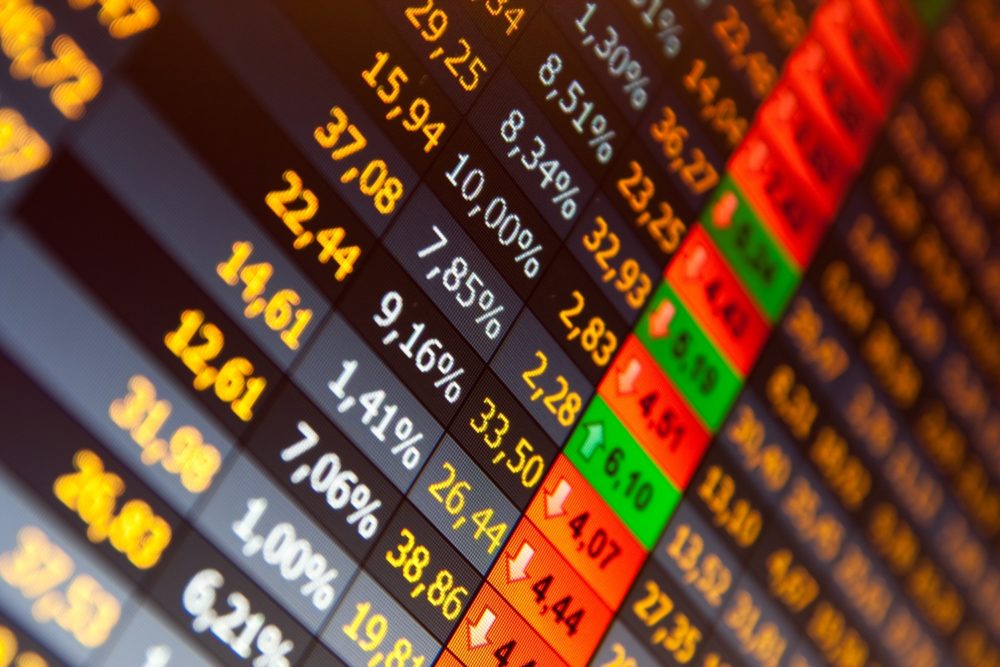Stocks - bonds, does this relationship still exist?
The bear market in the bond market seems to be bigger now than it was during the great financial crisis. Then the index fell by 10,8 percent, today the decline from the top is already 11 percent. Will there be a flow of capital from bonds to stocks, as in the past?
The realities of financial markets can be broken down into the times before and after the great financial crisis 14 years ago. At that time, previously unimaginable tools were introduced, such as negative interest rates on bonds and negative interest rates.
Repetition of history
During the Great Financial Crisis, central banks around the world made huge efforts to save a system that could destroy itself. They did not allow it to be cleaned up to protect the jobs of ordinary citizens, but also the bonuses of the Wall Street people. There were measures that resulted in significant inflation of financial assets in all categories. At the same time, both stocks and bonds seemed to rise.
A similar situation took place with the powerful support of the economy as a result of the COVID-19 epidemic. Here, the actions were justified by the common good. However, they also went in the same direction, i.e. massive asset price inflation. Projects, raw Materials, debentures, cryptocurrencies - all this seemed to be more expensive at the same time.
The war prompted the banks to react quickly and decisively
Currently - with inflation unheard of in decades, which is combined with the pandemic factor and, above all, the war unleashed by Russia in Ukraine - central banks have to abandon their previous approach. As a result of expectations for a monetary tightening, not in a gentle manner, but rather quickly and decisively, both government and corporate bonds are starting to lose value.
The index presented by the Bloomberg agency seems to indicate that the bear market is currently slowing down than in the great financial crisis. Then the index fell by 10,8 percent, and now the decline from the top is already 11 percent. Here, in turn, the question arises whether there will be, as in the past, the traditional flow of capital from bonds to shares?
After the bond bubble, time for stocks?
In the past, the normalization of monetary policy has resulted in interest rates being raised above the level of inflation. Capital could therefore lie and pay off. Right now, rising interest rates can only reduce negative real interest rates. Thus, the capital accumulated, for example, on deposits, will lose value under the influence inflation.
It is possible that after the bond market bubble bursts, there may be time for a bubble in the stock market. Because what else, if not a bubble, seems to be the transfer of capital from bonds to equities at the time of weakening economic growth and a possible decline in the dynamics of corporate results? The immediate future may show whether the pre-2007-2008 book relationship is still valid.






















![Forex Club – Tax 9 – Settle tax on a foreign broker [Download the Application] Forex Club - Tax 9](https://forexclub.pl/wp-content/uploads/2024/02/Forex-Club-Podatek-9-184x120.jpg?v=1709046278)
![Trading View platform – solutions tailored to the needs of traders [Review] trading view review](https://forexclub.pl/wp-content/uploads/2024/03/trading-view-recenzja-184x120.jpg?v=1709558918)
![How to connect your FP Markets account to the Trading View platform [Guide] fp markets trading view](https://forexclub.pl/wp-content/uploads/2024/02/fp-markets-trading-view-184x120.jpg?v=1708677291)
![How to invest in ChatGPT and AI? Stocks and ETFs [Guide] how to invest in chatgpt and artificial intelligence](https://forexclub.pl/wp-content/uploads/2023/02/jak-inwestowac-w-chatgpt-i-sztuczna-inteligencje-184x120.jpg?v=1676364263)






![Izabela Górecka – “Success on the market depends not only on knowledge, but also on emotional stability” [Interview] Izabela Górecka - interview](https://forexclub.pl/wp-content/uploads/2024/04/Izabela-Gorecka-wywiad-184x120.jpg?v=1713870578)
![WeWork – the anatomy of the collapse of a company valued at $47 billion [WeWork, part II] wework bankruptcy story](https://forexclub.pl/wp-content/uploads/2024/04/wework-bankructwo-historia-184x120.jpg?v=1711729561)
![Adam Neumann – the man who screwed up Softbank [WeWork, part AND] adam neumann wework](https://forexclub.pl/wp-content/uploads/2024/04/adam-neumann-wework-184x120.jpg?v=1711728724)


![The most common mistakes of a beginner trader - Mr Yogi [VIDEO] Scalping - The most common mistakes of a beginner trader - VIDEO](https://forexclub.pl/wp-content/uploads/2024/03/Scalping-Najczestsze-bledy-poczatkujacego-tradera-VIDEO-184x120.jpg?v=1711601376)
![Learning patience: No position is also a position - Mr Yogi [VIDEO] Scalping - Learning patience - No position is also a position - VIDEO](https://forexclub.pl/wp-content/uploads/2024/03/Scalping-Nauka-cierpliwosci-Brak-pozycji-to-tez-pozycja-VIDEO-184x120.jpg?v=1710999249)
![When to exit a position and how to minimize losses - Mr Yogi [VIDEO] Scalping - When to exit a position and how to minimize losses - VIDEO](https://forexclub.pl/wp-content/uploads/2024/03/Scalping-Kiedy-wyjsc-z-pozycji-i-jak-minimalizowac-straty-VIDEO-184x120.jpg?v=1710336731)





![How to invest in ChatGPT and AI? Stocks and ETFs [Guide] how to invest in chatgpt and artificial intelligence](https://forexclub.pl/wp-content/uploads/2023/02/jak-inwestowac-w-chatgpt-i-sztuczna-inteligencje-300x200.jpg?v=1676364263)













Leave a Response